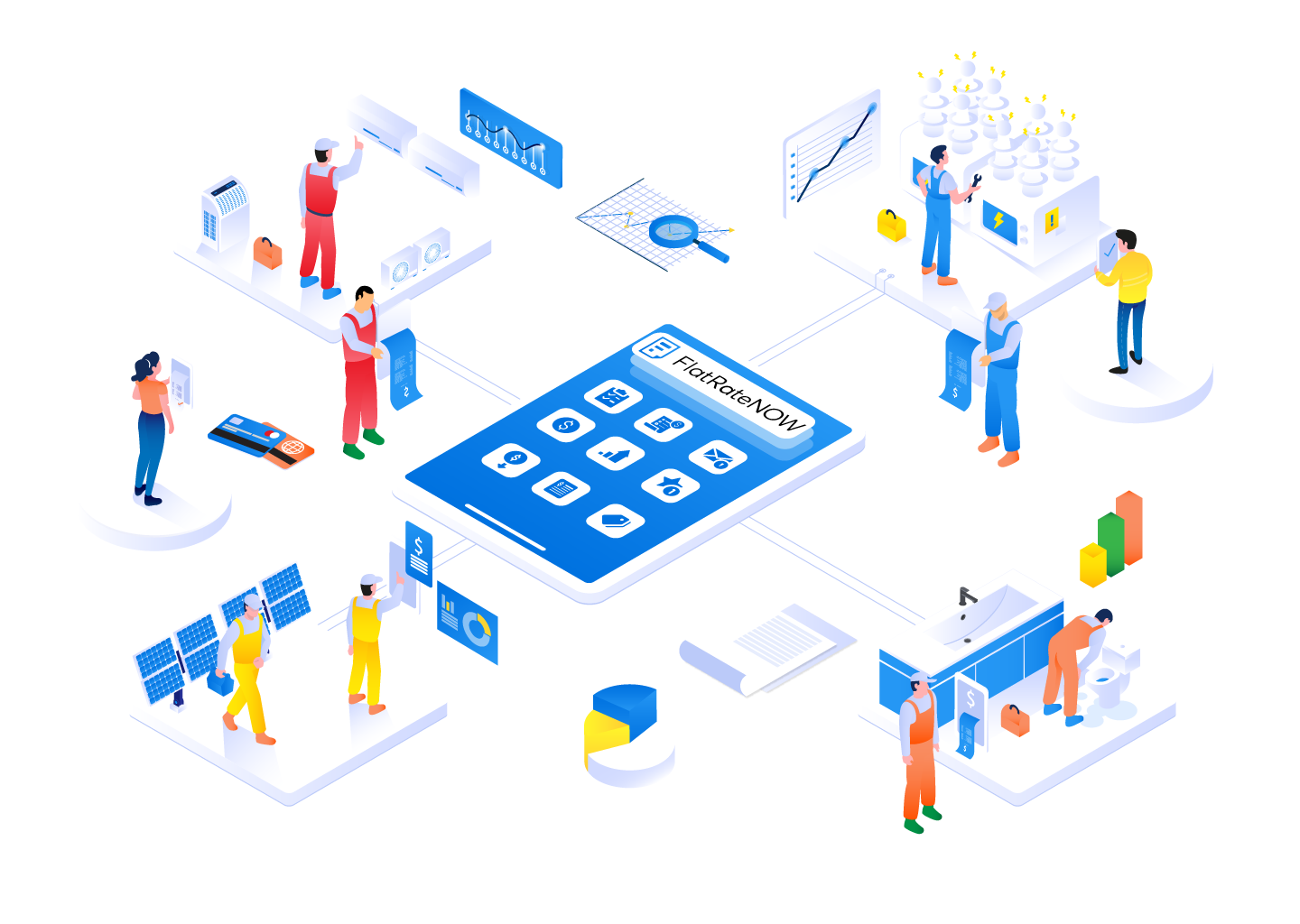Pricing is a science and needs periodic fine-tuning
Plumbing and electrical professionals often overlook the improvements they could make on their pricing. It is only by looking at your job and sales history, and comparing the sales performance of different tasks and task categories, that you discover which tasks needed to be discounted most (and least), and which had the highest (and lowest) margins, as well as which always sell and which rarely do.
With this information, you can raise some prices while lowering others, and focus marketing spend on high margin tasks that sell easily while dropping others from your business entirely.
Use FlatRateNOW to obtain all the information you need to make pricing decisions
FlatRateNOW uses a mathematical formula that incorporates cost and market variables and a 3 tier data model to produce the price of a standard task. Standard task prices use the cost of materials and a calculated cost of labour to formulate the ‘base cost’ before market factors are applied to calculate the ‘retail price’.
Calculating Your Base Cost For A Task
Base Costs are defined by you to accurately reflect the cost of materials and labour…
Materials costs use price files from the major suppliers in Australia. You list your suppliers in order of preference, and upload your own price files from your suppliers to reflect your true costs.
Labour is the average number of hours required to complete the task multiplied by the cost of each hour. The number of hours per task is an average value calculated over 20 years that factors in skills/experience, material delivery/pick-up and disposal, any call-backs, getting to site, and any compliances, as well as the cost of getting the job etc. You can change the labour value for each task if you disagree with our estimates.
Uploading your supplier price files (or using ours) and adding your cost of labour per hour establishes your base cost for each task.
Calculating The Price Of A Task For Your Customer

Each individual trade company in each location inputs and amends customised values for the pricing levers outlined below to establish correct prices for ‘what the market will bear’.
Pricing Levels:
- Mark-Ups - Do you mark up your materials? Do you use Cost+ or Retail+? How many tiers of markups do you have? (FlatRateNOW supports up to 6)
- Customer Segmentation - Do you have different pricing tiers for different customers? How many and which of your customers do they apply to? What percentage mark-up or markdown against retail/standard price do these customer tiers pay? (FlatRateNOW supports up to 10 tiers)
- Contracts - Do you do Strata jobs or do work for large organisations? Do some contracts require lower rates? You can create a pricing tier for each?
- Memberships - Do you have members or sell maintenance agreements? You can create a pricing tier?
- Discounting - Do you discount to get the job? What level of independence do you give your service people to discount?
- Surcharging - Do you allow discounting during some parts of the week, or add surcharges during others?
All of these factors play their part in enabling you to get the prices you feel comfortable with and can justify to your customers.
Calculating Sales Margins
FlatRateNOW calculates the expected margin of each work order, using the base cost and the achieved price (after discounting). These are included in your daily work order reports, which over time can be used to fine-tune pricing and target marketing.


